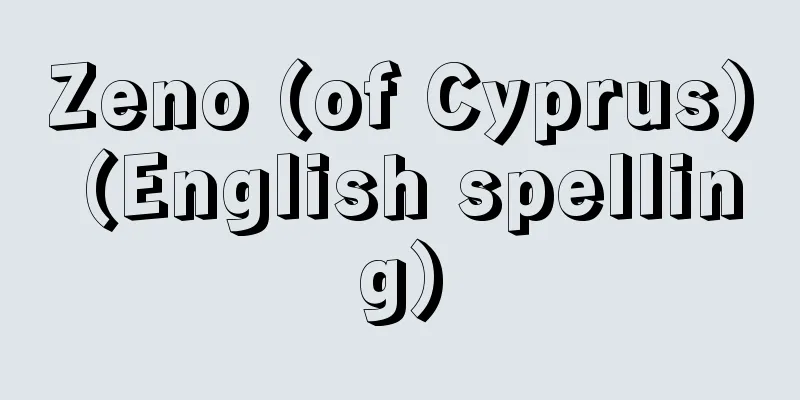Joji Tsubota

|
Novelist and children's writer. Born in Okayama Prefecture on March 3, 1890. Entered Waseda University preparatory school for humanities in 1908 (Meiji 41). While there, he studied under Ogawa Mimei, but after repeatedly dropping out and re-enrolling due to illness and military service, he graduated from Waseda University's English department in 1912 (Taisho 4). He then returned to his hometown to work at his family's weaving factory, and continued to lead a difficult life balancing the family business and writing. In 1913, he published "Shota's Horse." In the same year, he published his first children's story, "The Story of the Kappa," in "Akai Tori." He later received high praise from Suzuki Miekichi for his work "Zenta and the Train," and went on to publish over 40 stories in "Akai Tori," including "The Donkey and Sanpei," "The Thief," "Magic," and "The Loquat Fruit." From 1933 (Showa 8) onwards he devoted himself to writing, and in 1960 he published "The World of Ghosts" in Kaizo, which was well received and became his breakthrough work. "Children in the Wind," which ran serially in the Asahi Shimbun from September 1961, was a work that depicted the feelings of children in relation to society, and firmly established his position in the literary world. In 1963 he serialized "Children's Seasons" in the Miyako Shimbun, and the following year he won the Shinchosha Literary Award. In 1954 (Showa 29), the eight-volume "Complete Works of Tsubota Joji" was published, and the following year he won the Japan Art Academy Award for this collection. In 1988 he founded the children's story magazine "Loquat Fruit School." In 1989 he became a member of the Japan Art Academy. He passed away on July 7, 1982, at the age of 92. [Kiyoshi Seiya] "The Complete Works of Joji Tsubota, Eight Volumes (1954, Shinchosha)" [Reference] | |Source: Shogakukan Encyclopedia Nipponica About Encyclopedia Nipponica Information | Legend |
|
小説家、児童文学者。明治23年3月3日、岡山県に生まれる。1908年(明治41)早稲田(わせだ)大学文科予科に入学。在学中小川未明(みめい)に師事するが、病気や入営などで退学・再入学を繰り返したのち、15年(大正4)早稲田大学英文科を卒業。その後帰郷して家業の製織所に勤め、家業と文筆との苦しい生活が続く。26年『正太の馬』を出版。同年『赤い鳥』に最初の童話『河童(かっぱ)の話』を発表。その後同誌発表の『善太と汽車』で鈴木三重吉(みえきち)の激賞を受け、『ろばと三平』『どろぼう』『魔法』『びわの実』など40編余りを『赤い鳥』に発表する。33年(昭和8)以後は文筆に専念、35年『改造』に発表した『お化けの世界』は好評を得、出世作となった。36年9月から『朝日新聞』に連載された『風の中の子供』は、子供の心情が社会とかかわるところで描かれた作品で、文壇的地位を確固たるものにした。38年には『子供の四季』を『都新聞』に連載、翌年新潮社文芸賞を受賞。54年(昭和29)『坪田譲治全集』全八巻が刊行され、この全集で翌年芸術院賞を受賞。63年には童話雑誌『びわの実学校』を創刊。64年芸術院会員となる。昭和57年7月7日、92歳で没す。 [征矢 清] 『『坪田譲治全集』全八巻(1954・新潮社)』 [参照項目] | |出典 小学館 日本大百科全書(ニッポニカ)日本大百科全書(ニッポニカ)について 情報 | 凡例 |
Recommend
Nabū-naid (English spelling)
…reigned 555-539 B.C.; more precisely, Nabū-naid....
Carcharodon sulcidens
…[Ueno Teruya]. … *Some of the terminology that m...
Wire rope
Also called steel rope. A rope made by twisting th...
Collaborative medical care - gassakuiryo (English spelling)
One of the medical systems in the People's Rep...
Tectonite (English spelling)
A metamorphic rock formed by mechanical metamorphi...
"Motion Picture World"
...Early movies flourished around two major theme...
Thin swallowtail moth - Thin swallowtail moth
…The bamboo grass moth Balataea funeralis is not ...
Early modern Japanese music chronology - Early modern Japanese music chronology
A chronology of the various schools of Japanese mu...
Top-up criteria - Uwanoseki Jun
Pursuant to the provisions of Article 4 of the Air...
Venda (English spelling)
A designated area of South Africa that existed a...
Green anole
...The Fiji Iguana, Brachylophus fasciatus , is a...
Debris avalanche - Rock avalanche
...This causes great disasters at the foot of the...
Imo-mejitsumi - Imo-mejitsumi
…The masonry of the timber frame has been used si...
Collection lawsuit - toritatesosho
In a compulsory execution procedure for a monetary...
Rotorua - Rotorua (English spelling)
A city on the southern shore of Lake Rotorua in t...









